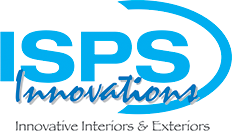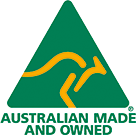Q&A on Bonethane Splashbacks
If I have an accidental spill of silicone on the face of Bonethane, what do I do?
Is Bonethane a Glass Splashback?
What is the thickness of Bonethane?
Can you cut the Bonethane sheets yourself?
Are there different grades of Bonethane?
When cutting Acrylic grades do I use a blade with fine sharp teeth designed to cut plastic?
Does IPA Acrylic differ from Bonethane Premium?
How many people are required to install Bonethane?
Why do people choose Bonethane?
Can Bonethane be placed on a flame or electrical element?
Can Bonethane be used as a bench top?
Can I use Pine o clean, Bleach or thinners etc. on Bonethane face to clean?
What do we use to glue Bonethane to wall?
If I used a scourer on Bonethane will it damage the sheet?
Can I use coloured silicone on the back of Bonethane to mount on to wall?
Is there a special technique to applying silicone in preparation to mounting Bonethane to the wall?
What other items do I need to install Bonethane?
Can I peel the masking off of Bonethane prior to installation?
Why can there sometimes be colour variations within sheet?
Can you colour match glass within 10%?
Can you apply the Bonethane colour to the glass insert offer?
Can I bend Bonethane to house an internal right angle?
Can I print DigialArt by ISPS Innovations on Bonethane Premium?
Can Bonethane Premium be placed behind a cooktop?
What is GripTek technology? Is it only used on Bonethane Premium?
If I have an accidental spill of silicone on the face of Bonethane, what do I do?
Use diggers wax & grease remover. Pour product to soft cameo, to remove silicone from the face of the sheet. The residue should gradually remove, wash the area with warm soapy water, rinse and wipe with a clean hot damp cloth.
What Silicone do I use?
use neutral cure clear, highly flexible silicone sealant. (Non acidic). Mould & UV resistant. Neutral cure, non corrosive.
When I buy Bonethane and I need two or more sheets the same colour should I buy from the same colour batch.
Yes, it is advised to buy off the same colour batch because of the curing and colour aging process. Please contact (08) 8381 8880 for more information
Is Bonethane a Glass Splashback?
No, Bonethane is Polymer splashback. Suitable for induction and ceramic cooktops. Bonethane has a continuous service temperature of 110°C. Can go behind free standing cooktops that have a metal plate fixed to the rear of the cooktop. The cooktop must not sit on the wall and a the flame must be protected from touching the splashback. Glass inserts or stainless steel is recommended for heat greater than 110°C to sit behind the cooktop.
What sheet sizes are available to order?
Sheet sizes: 5mm up to 2440 x 1220.
Available cut size or cut to shape, we can provide sheets up to 2m by 3 m.
What is the thickness of Bonethane?
5mm.
Can you cut the Bonethane sheets yourself?
Yes, Bonethane sheets can be easily cut by using the most standard fabricating equipment
IPA Acrylic can also be cut, but more care and planning is required.
When cutting Acrylic grades do I use a blade with fine sharp teeth designed to cut plastic?
Yes plastic blade or stainless steel must be used when cutting Bonethane or IPA Acrylic. All Acrylics burn the same & do not perform like Bonethane. Please refer to spec sheets.
Does IPA Acrylic differ from Bonethane ?
Yes. Bonethane is a high heat polymer, designed for induction and ceramic cooktops.
How many people are required to install Bonethane?
One to two people
Why do people choose Bonethane?
Unlike Glass & Acrylic substrates, Bonethane will not chip, break split or explode, during handling & is easy to maintain & repair.
Bonethane is easy to install & is cost effective.. Available, in any colour (additional charge for metallic and printed splashbacks).
Cut outs can be done on site saving you further labour costs, leaving the stress behind.
Fine scratches can be buffed out (enquire about our new polishing compounds). Bonethane Premium has a continuous service temperature of 110°c. Bonethane is also suitable for homes that suffer on ground movement which create stress in the foundations of homes leaving cracks in walls which can effect tiles or glass & acrylic splash backs. Bonethane is designed to float within its parameters as we allow a 1 to 3mm gap prior to installation, allowing Bonethane to expand and contract in its environment.
Can Bonethane be placed on a flame?
No, do not leave extreme heat items in close proximity i.e. hot pans, leaning against Bonethane. This could damage or mark the product if left for long periods of time.
Not suitable for behind BBQs
Question: would you pick up a hot frying pan & place this on a laminate benchtop or timber bench top? I think not.
Do not place Bonethane on a direct flame or heating element or anything of constant extreme heat nature ( minimum of 20 cm space from flame) longer distances for products that are of a greater heat.
See our Bonethane Vs Acrylic burn Test. Bonethane reside 3cm either side of Acrylic that is engulfed in flames, Bonethane is not effected, see for your self.
Warranty will be void if information stated is not followed. Bonethane has a continuous service temperature of 110°C maintaining distance specifications. IPA Acrylic continuous service temperature is 88°C, however we must maintain care with all products as once product is in your hands it is your responsibility to assure proper measures are in place when installing for your own safety & safety of others.
Can Bonethane be used as a bench top?
no
Can I use Pine o clean, Bleach or thinners etc. on Bonethane grades face to clean?
No it's part of your warranty that Bonethane is maintained strictly with warm soapy water & a sponge to keep bright and shiny, please refer to maintenance care sheet. This is also better for the environment.
For oil removal in bathrooms or kitchens use diggers wax and grease remover (with no bleach) followed by a simple wash with warm soapy water.... will do the trick.
Remember when soapy residue is rinsed off the face of the sheet, wipe down again with a warp damp towelling cloth allowing your splashback to air dry & shine.
What do we use to glue in our polymer or glass splashback to the wall?
Clear non acidic silicone. Water proof silicone suitable for kitchen, bathrooms and laundries. Clear/translucent silicone, non acidic, neutral cure
If I used a scourer on Polymer or glass will it damage the sheet?
Yes, , there is no need for scourer or abrasive cleaning agents that can harm your hands, your health and your splashback. If an error has happened, rest assured most scuffs can be reversed by light buffing restoring your polymer splashback to its original sheen. Enquire about our new buffing agents.
Glass can not be polished out.
Can I use coloured silicone on the back of ISPS splashbacks to mount on to wall?
No you must use clear non acidic silicone, translucent, neutral cure. The silicone should not penetrate through the nominated colour. By using a darker non acidic silicone you run the risk of impressions of the silicone through the sheet. The same thing will happen if you use acidic silicone or further by using acidic silicone it will not bind to the wall.
Is there a special technique to applying silicone in preparation to mounting Bonethane to the wall?
Yes, please refer to step by step for grid effect or contact 08 8381 8880 for tips!
What other items do I need to install ISPS Splashbacks ?
The following items are required that are not included. tile wedges, clear silicone (non acidic translucent silicone), protective goggles, dust mask, saws, level, bracing etc. The following tools can also be used for cutting: circular saw fine sharp teeth only a continuous action for straight cuts, no stopping or starting, jigsaws; band saws, router, planer, drilling etc require plastic drill bit attachment or stainless steel bit.
TIP: Ensure wall free of holes etc, refer to preparation of Bonethane in Tips section.
Can I peel the masking off of the splashbacks prior to installation?
If you have multiple sheets you can peel the masking back to verify colour consistency or if joining a printed image, to align.
Why can there sometimes be colour variations between sheets?
For reasons beyond our control there can be multiple reasons. Sheets could be batched at different times. Colour aging process handled at different times. We could be supplied the same colour name from a colour paint range & they have two different colours with the same name because they have updated their colour palette. Its important that your colour choice be posted to us as we do not take responsibility if you have asked us to go & collect a colour from a store. Colours go through a curing & aging process, the colours age like a fine cheese or wine, before it settles into its colour. We are colour specialists call us prior to making a commitment to the end result we have a large number of categories & colour choices.
Can you colour match glass within 15%?
No, Standard toughed glass has a light green tinge which can either lighten or deepen the colour. Starfire toughened glass can be colour matched within 25% colour tone variation.
Can I go over existing tiles with polymer splashbacks?
Yes give a sand over the wall & coat wall with white tile paint making a neutral colour for placement of your polymer sheets.
TIP: Consider how far the tiles protrude from the wall as once the Bonethane sheet is placed over the face of the tiles it will sit out a further 5mm from the wall.
Can I have printed DigialArt by ISPS Innovations on polymer or glass splashbacks
Yes simply provide a high resolution image of 300 dpi or a EPS file and we can reproduce into high gloss printed polymer splashback or printed toughened glass splashback.
Can Bonethane be placed behind a cooktop
Only behind an induction or electric cook top & requires a 60 mm space to the rear of the cooktop. Hot pans or pots must not be pressed up against Bonethane Splashbacks .
What is GripTeK barrier backing? Is it only used on Bonethane
GripTek barrier is applied to the back of our Bonethane IPA Acrylic sheets available through ISPS Innovations nationally. It prevents neutral cure silicone bleeding, shadows from behind the wall and locks in the colour.


